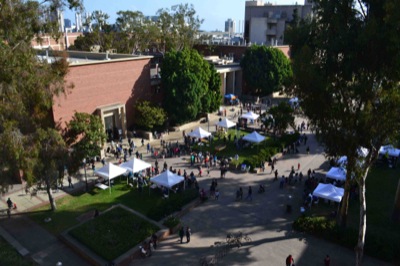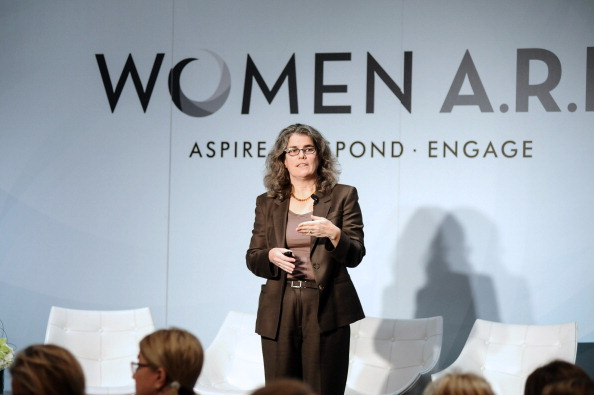
EDUCATION & PUBLIC OUTREACH
PUBLIC OUTREACH
Inspiring and educating the general public about the importance of cutting-edge research and technology by broadly diseminating discoveries about black holes, which have immense popular appeal.
PROFESSIONAL EDUCATION
Educating the next generation of scientists about emerging methods for studying black holes and their environs, and about technologies that are essential for the next generation of telescopes.
WOMEN IN ASTRONOMY
Inspiring women and others who are poorly represented in the physical sciences through mentoring and the visibility of a program that is led by a woman and that has an unusually diverse workforce.
PUBLIC OUTREACH
Journey through the Universe is a week long public outreach event hosted by Gemini Observatory in Hilo, HI, where scientists visit ∼3000 classrooms! For several years, members of the Galactic Center Group have participated in this very successful program which promotes sustained education in science, technology, engineering, and mathematics (STEM). Breann Sitarski participated in this year's program. Breann visited seven different elementary school classrooms where she demonstrated how to make a model of a comet using household materials. Also after showing a movie of Comet Ison , she worked with students by helping them think about whether the comet survived its closest approach to the Sun, based on what they saw. The observation-based learning teaches the students how to think critically, helping them become little scientists.
All Space Considered is a monthly event at Griffith Observatory, invited Dr. Gunther Witzel as a featured speaker in December 2014. He shared the latest news on the mysterious object, G2, that has been the focus of much attention since its discovery in 2011. The Galactic Center Group observed G2 using Keck Telescopes in summer of 2014; the observation showed that G2 survived its closest encounter with the Galactic supermassive black hole, strongly suggesting that it was most likely a pair of binary stars that had been orbiting the black hole in tandem and merged together into an extremely large star, shrouded in gas and dust. If G2 were a simple ga cloud, it would not have survived the black hole encounter.
STEM program at Mirman School for highly gifted children. This is a biennial program in which more than 30 speakers in various fields in science, technology, engineering and math gave talks to students (ages 5-14). In March this year Dr. Shoko Sakai of the GCG participated in the Women in STEAM program. Dr. Sakai's talk, titled How Do We See a Black Hole? attracted many middle school students who asked questions continuously on topics from curved space to what happens if two black holes collided into each other.
Exploring Your Universe is an inter-departmental public outreach fair by the physical science departments event that has been held in November the past four years. The 2014 Exploring Your Universe was co-hosted and coordinated by the Galactic Center's Graduate Student Breann Sitarski. Over 5,500 members of the local LA community and surrounding area attended the latest event. The Galactic Center Group participated in the Exploring Your Universe for the first time in 2014; it was also one of the event sponsors. The Gravity Demonstration especially attracted a lot of curious minds. Professor Larkin demonstrated with marbles how gravity due to a black hole affects other objects.

Professor James Larkin is demostrating how gravity works. Credit: iPLEX, UCLA © 2015

Exploring Your Universe day. Credit: iPLEX, UCLA © 2014
Educational Material for Public Use
Galactic Center Slide Show A Powerpoint presentation by Jessica Lu, originally written for the UCLA Planetarium. The show is for viewers of all ages and is a pictoral journey into the center of our galaxy. It also explores the nature of the supermassive black hole. Notes explaining each slide acccompany the presentation are included, making it very useful for classroom/educational settings -- Best viewed in Slide Show mode COSMUS 3D Interactive Animation of the stars orbiting the supermassive black hole at the center of the Milky Way. Our collaboration with the Cosmus group is an effort to make current science available to the public for classroom use or for planetarium and museum settings.
PROFESSIONAL EDUCATION
Since its inception in 1995, close to 70 Ph.D., M.S., undergraduate and high school students have been involved with the Galactic Center group.
Working with the Galactic Center Group provide opportunities to
both gain profesional knowledge in physics & astrophysics involving objects under the
gravitational influence of a supermassive black hole and working with the development of cutting edge
optical instrumentation. The former student page shows a selection
of the career path some of our students have taken.
The Galactic Center Group is hosting its first annual workshop in February 2015. The purpose of the workshop is not only to inform the group members about various topics that are being pursued by the Galactic Center Group, but also to bring everyone, especially those students who are new to the field, up to speed on the details of data reduction and analysis tools.
WOMEN IN ASTRONOMY
Almost half of the students that have been working with our group are female students, making our group quite anomalous in terms of the participation of under-represented group. Even beyond our direct research group, the encouragement of young women into the sciences is a high priority for the P.I. of this program, Professor Ghez. Together with our students and postdoctoral fellows who are involved routinely in outreach programs outside UCLA, they reach larger audience, and in particular the incoming generation of young women as role models.
